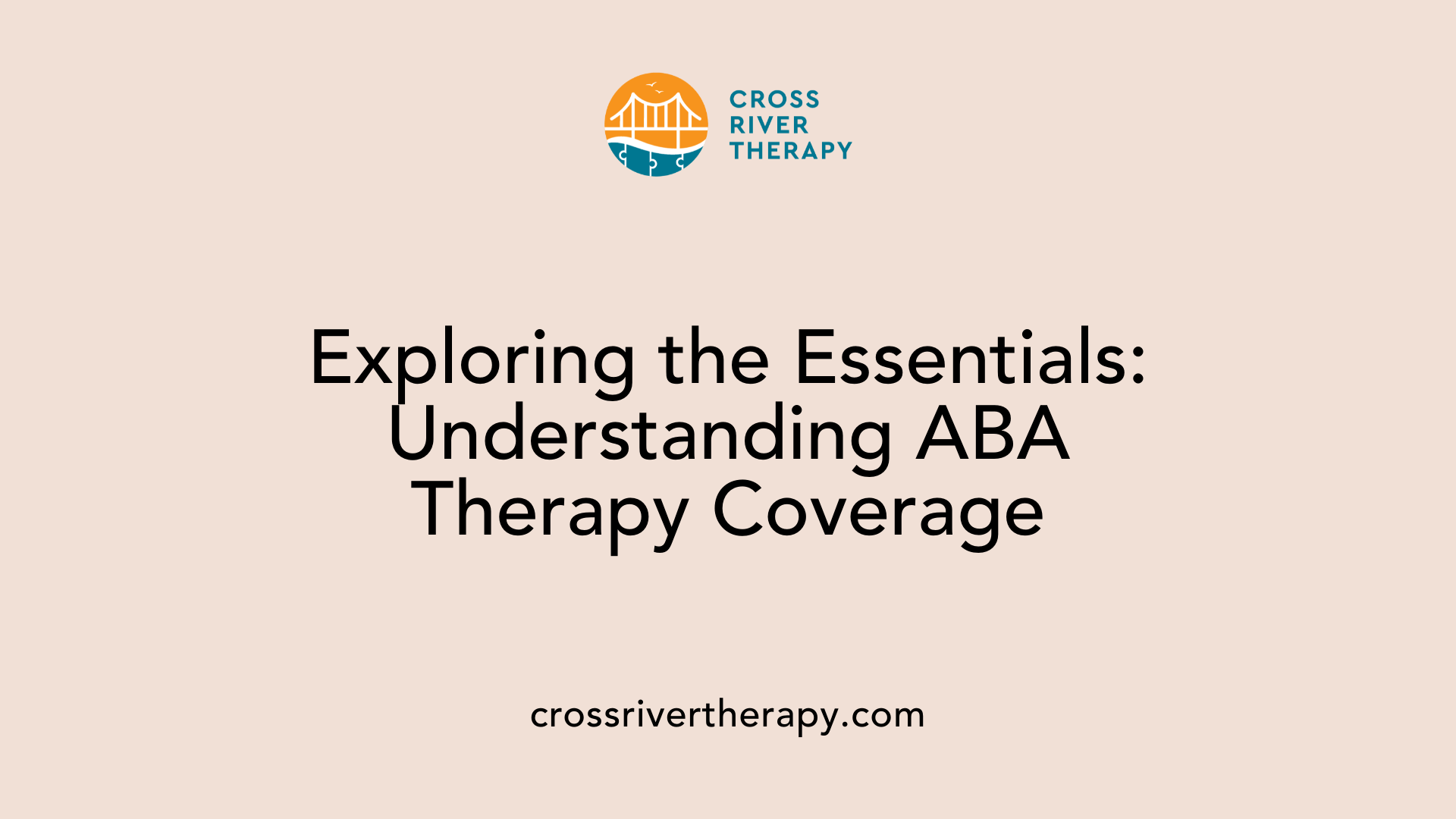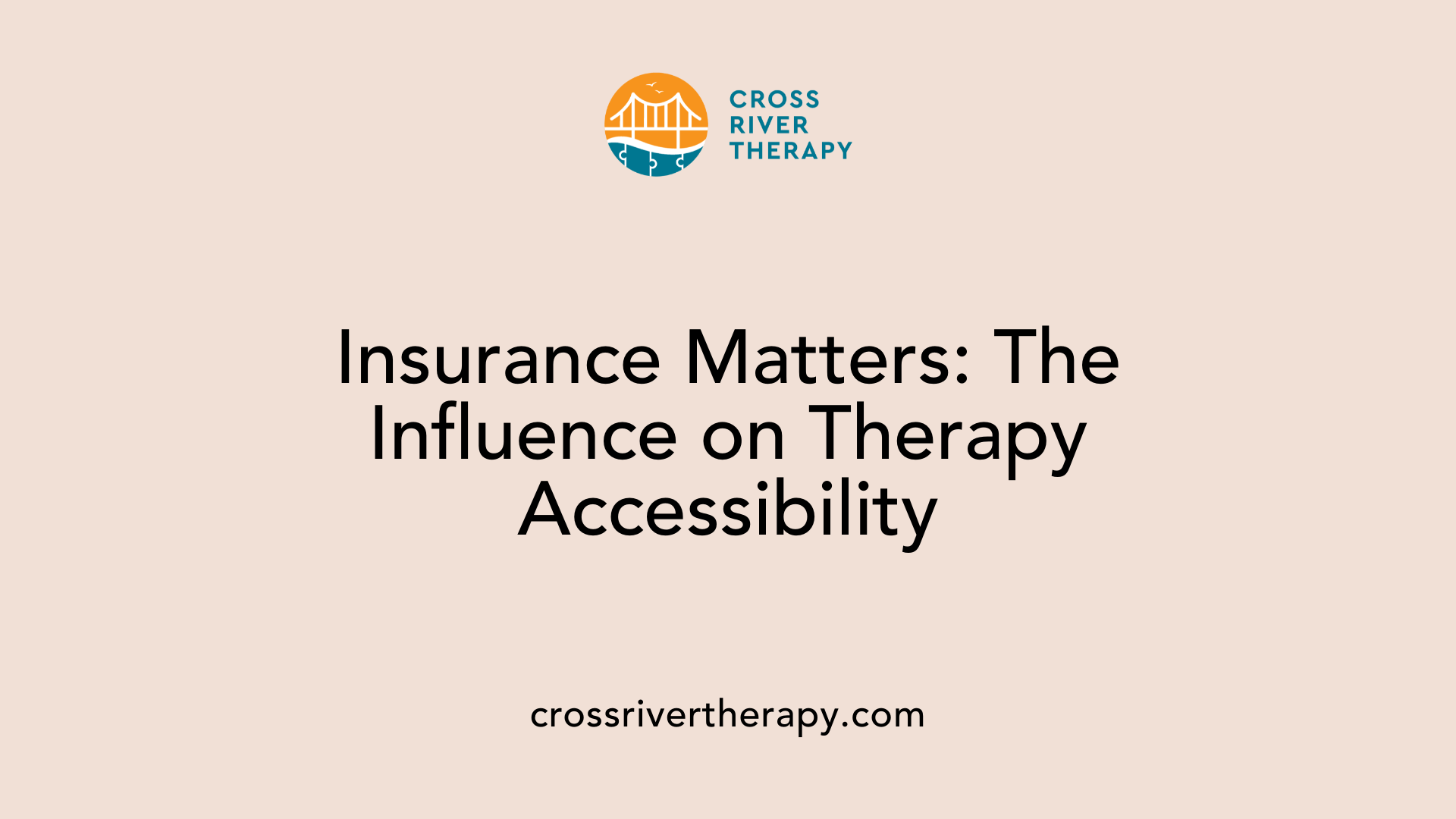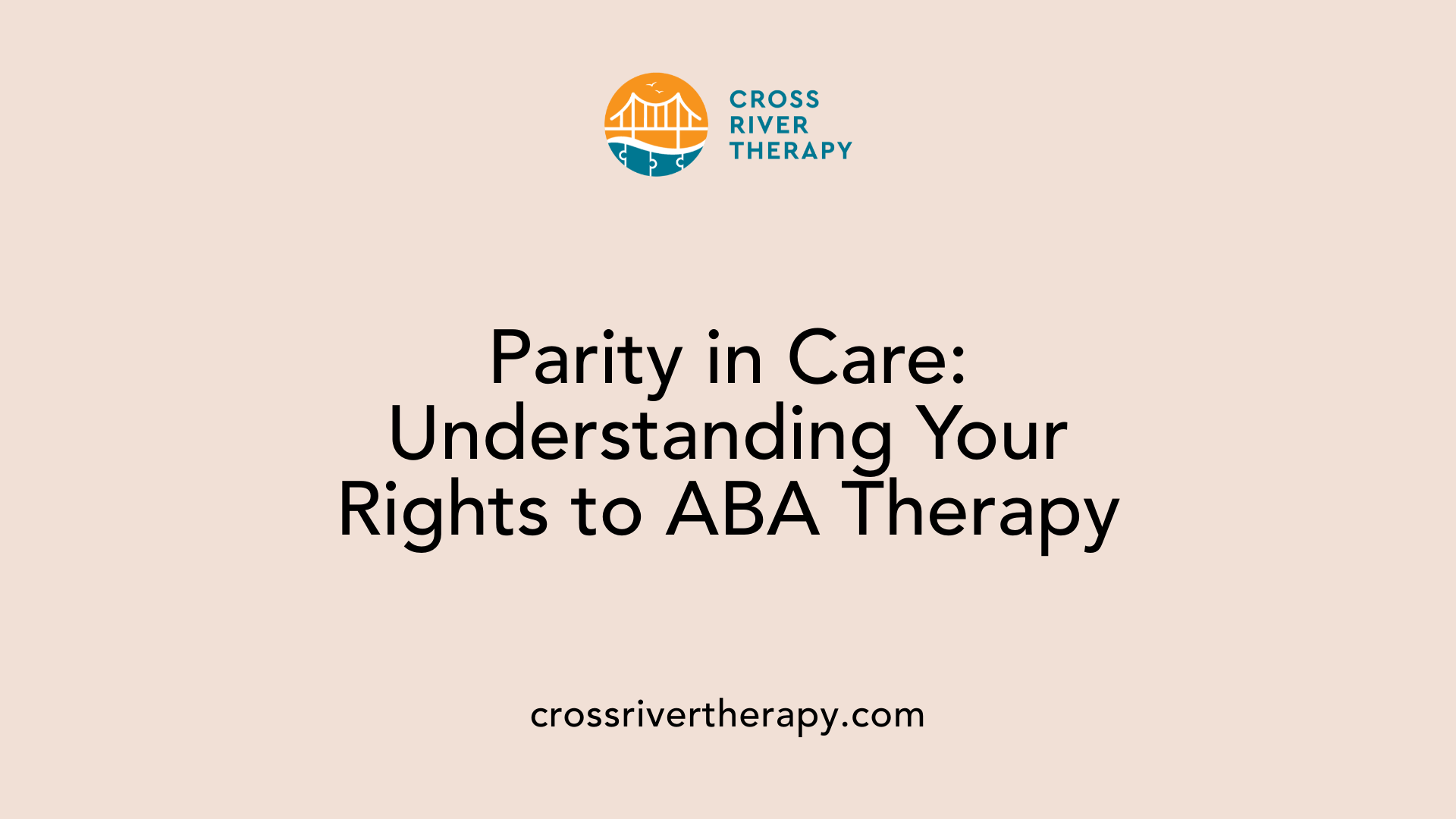The Difference Between Private and Public Insurance Coverage for ABA Therapy
Exploring Autism Therapy Coverage Through Different Insurance Lenses
Understanding Insurance Coverage for ABA Therapy
Access to Applied Behavior Analysis (ABA) therapy, a highly effective treatment for individuals with Autism Spectrum Disorder (ASD), is significantly influenced by the type of insurance coverage families have. Differences between public and private insurance plans can determine the level of financial burden families face and the accessibility of necessary therapy services. In this article, we delve into these variations to provide families with the insights they need to navigate the complexities of insurance coverage for ABA therapy effectively.
Overview of Insurance Coverage for ABA Therapy

What insurance covers ABA therapy?
ABA (Applied Behavior Analysis) therapy is widely recognized as a beneficial treatment for children with autism spectrum disorder (ASD) and is covered by various private and public insurance plans. At least 200 million people currently have coverage, thanks to advocacy efforts from organizations like Autism Speaks.
However, the extent of coverage can vary significantly based on the type of insurance plan. Fully insured plans are required to adhere to specific state mandates that may necessitate coverage for ABA therapy. In contrast, self-funded insurance plans, regulated by federal law, may decide independently whether to provide such benefits.
Certain states have enacted laws mandating that insurance plans cover ABA therapy, ensuring that families can access necessary treatment. Additionally, Medicaid programs are required to provide medically necessary diagnostic and treatment services for children with autism, which includes ABA therapy.
What mandates and state laws impact coverage?
The landscape of insurance coverage for ABA therapy is influenced by various state mandates and laws, with 45 states and the District of Columbia currently enacting autism-specific mandates requiring coverage for diagnosis and treatment. Coverage specifics can differ significantly, such as:
- Limits on treatment: Some states may impose caps on annual spending for ABA services.
- Age restrictions: Certain laws may only apply to younger children.
- Coverage for allied health services: Policies often include necessary therapies like speech-language pathology or occupational therapy.
For example, Arizona has a $50,000 cap for individuals up to age nine for essential behavioral therapy. Families are encouraged to proactively verify their insurance plans for specific coverage details, including copayments and session limits. Understanding these mandates and engaging with insurance providers is essential for securing necessary support.
Dealing with Limited Insurance Coverage for ABA Therapy

What should I do if my insurance doesn't cover ABA therapy?
If your insurance plan does not cover Applied Behavior Analysis (ABA) therapy, it's essential to understand the type of health benefit plan you hold. Fully insured plans are often required by state laws to provide coverage for ABA services, whereas self-funded plans can set their own rules, potentially leaving families without the assistance they need.
For those on self-funded plans, you can take action by requesting a letter from your insurer stating that ABA therapy is not covered. Additionally, reach out to regional centers that may offer funding options.
Support organizations, such as Autism Speaks, can offer guidance through the complexities of the insurance landscape, helping families advocate for necessary health services. Given the significant advocacy efforts in the last decade, more than 200 million people are now covered for ABA therapy through various health plans.
If you face obstacles, don’t hesitate to connect with advocacy groups who can provide assistance and resources.
Importance of understanding one's health benefit plan type
Understanding your health benefit plan type is crucial when dealing with potential limitations on ABA coverage. The differences between fully insured and self-funded plans can significantly influence coverage levels and reimbursement processes.
- Fully Insured Plans: Typically required by state mandates to cover ABA therapy. This means families can often access necessary treatments without facing hefty out-of-pocket costs.
- Self-Funded Plans: Governed by federal law, these plans may have more flexibility, allowing employers to determine if they will cover ABA services, which can lead to substantial variability in available benefits.
Additionally, navigating provider networks and understanding coverage caps, deductibles, and co-pays is vital for families. Families should prepare necessary documentation, including a child’s diagnosis and any physician recommendations, to secure potential coverage effectively.
Knowledge is empowering, and being informed about your health plan can significantly influence your child's access to essential therapies.
Navigating Coverage Details and Eligibility
How can I check the eligibility criteria and coverage details for ABA therapy under various insurance plans?
To navigate the eligibility criteria and coverage details for ABA therapy, begin by confirming that your child has a formal diagnosis of autism. This diagnosis is essential and serves as the foundation for accessing benefits.
Next, obtain a statement of benefits from your insurance provider. This document will outline crucial information, including:
- Covered treatments under your specific plan
- Any potential out-of-pocket expenses you might incur
- Definitions of autism relevant to your coverage
- Limits on therapy visits and specifics on provider networks
Direct communication with your insurance representative is vital. Don’t hesitate to ask detailed questions about your coverage, including visit limits and whether certain therapies, like Social Skills Groups, are offered if deemed medically necessary.
If your private insurance plan does not include ABA therapy, alternatives like enrolling in MassHealth can be beneficial for children under 21, providing access to necessary services. Be proactive in gathering all required documentation, such as your child’s diagnosis and physician orders, to facilitate a smoother approval process.
Impact of Insurance Types on Therapy Access

What are the implications of insurance types on access to ABA therapy services?
The differences between public and private insurance significantly shape access to Applied Behavior Analysis (ABA) therapy for children with autism spectrum disorder (ASD). Unfortunately, studies demonstrate that privately insured children are approximately half as likely to receive therapy compared to those covered by public insurance plans. This disparity indicates that families relying on private insurance confront considerable obstacles in securing necessary treatments.
Financial implications are profound as well. Families with private insurance often report out-of-pocket expenses that are 11 times higher than those seen by families utilizing public insurance. These increased costs act as a barrier, limiting access to vital therapies that support the development of communication and social skills in children with ASD.
While 42 states have enacted laws mandating coverage for ABA services, many families find themselves burdened with high direct costs, even when services are technically covered. This is particularly evident for families with substantial service needs, emphasizing the importance of continued reforms in private insurance to improve the accessibility of necessary therapies. Additional hurdles, such as long waitlists for evaluations and stringent medical necessity requirements, complicate the journey to adequate therapy access, further underscoring the disparities in treatment outcomes based on insurance types.
Cost Analysis with Insurance Coverage
What are the costs associated with ABA therapy with insurance?
The cost of Applied Behavior Analysis (ABA) therapy can indeed be high, averaging $120 per hour. This can translate to significant annual expenses, ranging from about $62,400 for attending 10 hours weekly to as much as $249,600 for 40 hours a week of therapy.
Fortunately, insurance coverage is a powerful tool in mitigating these costs. Many states mandate that insurance companies cover autism treatment, which can substantially lower the out-of-pocket expenses for families. For example, if a family has a low deductible, such as $50, they might only end up paying around $10,000 a year for four sessions of three hours each week.
Additionally, there are school-funded programs and state initiatives that may cover the costs entirely, especially following a comprehensive assessment. Families should note that other financial aid options like grants and scholarships are available, further easing the burden associated with ABA therapy costs.
How do state mandates play a role in cost reduction?
State mandates play a crucial role in ensuring that families have access to necessary treatments at a reduced cost. As of now, 42 states have enacted mandates that require coverage for ABA services. These mandates typically encompass treatments related to autism spectrum disorder, thus promoting a wider provision of care.
Moreover, coverage specifics can vary widely between states, including limits on treatment and age restrictions, but the overarching goal remains to facilitate access to essential therapy. Many families with private insurance—73.5% of those covered—benefit from these mandates, which influence the coverage characteristics and lay a foundation for support in navigating healthcare costs related to autism treatments.
Public Insurance and Medicaid Coverage for ABA Therapy
Medicaid mandates for autism treatment
In 2014, the Centers for Medicare and Medicaid Services (CMS) mandated that state Medicaid programs must provide medically necessary diagnostic and treatment services for children diagnosed with autism. By 2021, every state had adopted this requirement, significantly increasing access to Applied Behavior Analysis (ABA) services for millions of individuals through Medicaid.
This federal mandate underscores the importance of comprehensive treatment for autism spectrum disorder (ASD) and encourages states to allocate resources effectively to improve therapeutic outcomes for affected children.
Variability in state Medicaid coverage
While Medicaid serves as a lifeline for many families, the specifics of coverage can vary from state to state. Eligibility for ABA therapy under Medicaid typically hinges on family income and size, which can create discrepancies in access to services.
Moreover, the extent of coverage—such as therapy session limits and spending caps—can differ. For instance, some states may implement caps like Arizona, where there’s a $50,000 annual limit for children under nine for medically essential behavioral therapy.
Thus, it is crucial for families to understand their state’s Medicaid guidelines to navigate the complexities of coverage effectively and ensure their children receive the necessary support.
Private Insurance Coverage Complexity
Variability between fully insured and self-funded plans
Understanding insurance coverage for ABA therapy is crucial for families navigating treatment options. In the realm of health insurance, there are two primary types of plans: fully insured and self-funded.
Fully Insured Plans:
These plans must adhere to state laws regarding coverage for autism treatment, including Applied Behavior Analysis (ABA). This means that families can expect some level of mandated coverage, though specifics can differ significantly across states.Self-Funded Plans:
Self-funded plans, on the other hand, are governed by federal law under the Employee Retirement Income Security Act (ERISA). Thus, employers have the flexibility to establish their own benefit structures, potentially excluding ABA therapy altogether or providing limited support.
Families enrolled in self-funded plans may find access to ABA services inconsistent, making it vital to thoroughly review their plan details.
Impact of ERISA and employer decisions
ERISA's framework allows employers to shape the benefits they provide. This variability results in differing levels of coverage, with some employers choosing to include ABA services, while others do not.
- Negotiation Possibilities:
Employees may appeal for ABA coverage if it's not currently included in their employer's self-funded plan. Utilizing employee feedback and negotiations might influence the inclusion of these essential therapies. - Impact of Employer Size:
Larger employers are increasingly recognizing the need for comprehensive autism coverage within their plans, but the choice ultimately lies with them.
This leads to significant disparities in service accessibility and financial burdens based on insurance type, underscoring why navigating these complexities is essential for families seeking ABA therapy.
State-Specific Regulations and Coverage Mandates

State mandates for ABA therapy coverage
In recent years, there has been a rapid evolution in insurance coverage for Autism Spectrum Disorder (ASD) therapies, particularly Applied Behavior Analysis (ABA) therapy. By 2021, all states were required to provide some form of coverage for autism treatment, reflecting a nationwide commitment to enhancing access for affected children.
Interestingly, 45 states and the District of Columbia have enacted private insurance mandates specifically addressing autism. These mandates require insurers to cover the diagnosis and treatment of autism disorders, which includes ABA therapy. Additionally, many states are now incorporating requirements for allied health services such as occupational therapy and speech-language pathology to be available as part of essential autism treatment.
Specific provisions such as therapy visit caps
While mandates are in place to support ABA coverage, specifics can vary considerably from one state to another. Some states impose annual spending caps on ABA therapy; for example, Arizona has a $50,000 limit for therapies per year for children up to age nine. Such caps can significantly affect a family's access to necessary treatments, forcing them to navigate complex coverage limits.
Moreover, additional regulations might define the types of therapies covered, including maximum number of therapy visits. For families seeking to utilize ABA services, it is vital to understand their state's specific regulations, which can directly impact both the efficacy and availability of care.
Navigating Insurance Policies for Autism Therapy
Steps to Securing Coverage
Navigating insurance for autism therapy, particularly Applied Behavior Analysis (ABA), can be complicated due to varying policies. To start, families should take the following steps:
- Identify Your Insurance Type: Determine if you have private insurance, Medicaid, or a self-funded plan to understand the specific regulations that apply.
- Check Coverage Details: Verify if ABA therapy is covered under your plan. Review your policy for any limits on annual spending, co-pays, and treatment caps.
- Find a Provider: Locate a therapy provider who accepts your specific insurance. This is crucial for ensuring services can be billed appropriately.
- Gather Documentation: Collect supporting documents such as medical diagnoses, treatment recommendations from healthcare providers, and any required physician orders.
- Confirm Coverage for Allied Services: Ensure that other necessary therapies like speech or occupational therapy are also included, as these often complement ABA.
Dealing with Pre-Authorizations
Obtaining pre-authorization is a critical step before receiving services. Here’s how to address this:
- Understand Medical Necessity: Insurance companies typically require proof of medical necessity. Familiarize yourself with your insurer's specific requirements for ABA therapy coverage.
- Submit Required Documentation: Prepare to provide documentation that supports the necessity of ABA therapy. This may include a comprehensive treatment plan from a qualified professional.
- Follow Up: After submission, maintain communication with the insurance provider to ensure the request is being processed. Document all conversations and ensure any follow-up information is provided promptly.
By following these steps, families can navigate the complex insurance landscape for autism therapy more effectively.
The Role of Advocacy and Scholarships in Accessing Coverage
Organizations Providing Support for ABA Coverage
Accessing Applied Behavior Analysis (ABA) therapy can be a significant challenge due to the variability in insurance coverage. Many organizations exist to support families in navigating these complex systems. For instance, the Autism Society and local autism advocacy groups offer resources and guidance on understanding insurance policies and advocating for necessary services. These organizations often provide workshops, informative materials, and advocacy training to help parents push for appropriate coverage.
Grant and Scholarship Options
Financial assistance is vital for families struggling with the costs of ABA therapy. Several programs offer grants and scholarships specifically aimed at supporting therapy-related expenses.
- Autism Treatment Network (ATN): Provides resources and referral networks that may include funding opportunities.
- Local Non-Profits: Many state and local non-profit organizations focus on autism support and may have scholarship programs to help cover therapy costs.
- Online Crowdfunding: Platforms like GoFundMe are commonly used by families to raise funds for ABA services and related expenses.
By tapping into these resources, families can alleviate some of the financial burdens associated with securing essential therapy for their children.
Disparities in Therapy Service Utilization
Service Utilization Differences Based on Insurance
There are notable disparities in the utilization of therapy services between privately insured and publicly insured children with autism spectrum disorder (ASD). Research reveals that privately insured children are significantly less likely to access necessary therapies compared to their publicly insured counterparts. Specifically, the odds ratio indicates that privately insured children are less than half as likely to receive therapy services.
Out-of-pocket expenses present another hurdle, where families with private insurance report 11 times greater costs compared to those with public insurance. This financial strain often translates to fewer therapy visits.
Comparison of Therapy Visits Between Medicaid and Private Insurance Patients
Data highlights stark differences in therapy visit frequency based on the type of insurance. Children enrolled in Medicaid benefit from far greater access to various therapies:
| Type of Therapy | Medicaid Visits | Private Insurance Visits |
|---|---|---|
| Speech Therapy | 13.0 | 3.6 |
| Occupational Therapy | 6.4 | 0.9 |
| Behavior Modification | 3.8 | 1.1 |
These figures signal that while Medicaid provides more comprehensive support and access to essential therapies, privately insured families often face significant barriers, resulting in fewer therapy visits and heightened financial burden. Understanding this disparity is crucial as families navigate insurance options for autism treatment.
The Importance of the Federal Mental Health Parity Law

How do parity laws impact coverage?
The Federal Mental Health Parity Law plays a crucial role in determining insurance coverage for services related to autism. This law mandates that mental health and substance use conditions be treated equally to physical health conditions by insurance providers. As a result, families seeking ABA therapy for children with autism must navigate a complex landscape shaped by this legislation.
While the law aims for equitable treatment, coverage can still vary significantly based on the type of health plan. Fully insured plans must comply with state mandates, often including ABA therapy, whereas self-funded plans operated under ERISA have more flexibility and may not cover these services unless the employer chooses to do so.
Why is equal treatment of mental health conditions necessary?
Equal treatment is essential for ensuring families receive adequate support for their children’s needs. The disparity between mental health and physical health coverage has historically led to inadequate access to necessary therapies like ABA. By enforcing parity, the law encourages insurance providers to prioritize appropriate care and accessibility, helping to reduce financial burdens on families seeking essential services for autism treatment.
Exploring Federal and Exchange Marketplace Insurance Options
What federal insurance options are available for ABA therapy?
Federal programs such as Tricare are vital for families needing support for autism treatment. Tricare covers ABA therapy when the medical necessity criteria are met. This ensures access for many eligible children, providing a safety net for those without adequate coverage from other sources.
How do ACA plans assist families?
The ACA (Affordable Care Act) Exchange Marketplace offers valuable options for families seeking ABA therapy. Specifically, child-only plans can provide coverage tailored to meet the needs of children with autism spectrum disorder (ASD). These plans are especially beneficial for families whose employer-sponsored plans lack comprehensive ABA coverage.
What are the benefits of child-only plans?
Child-only plans from the ACA exchanges are designed to cover essential health benefits, including ABA therapy. Here are some advantages:
- Access to necessary treatments: Many plans ensure therapy sessions for children.
- Affordability: Options may allow for lower premiums and out-of-pocket costs compared to private insurance.
- Flexibility: Families can select plans that best match their financial and healthcare needs.
Navigating these options requires thorough research, but they can significantly ease the financial burden of obtaining crucial therapies.
Insights from Pilot Studies and Research
Key findings on insurance mandates
Research reveals that 45 states and the District of Columbia have instituted autism-specific mandates requiring private insurers to cover the diagnosis and treatment of autism spectrum disorders (ASDs). These mandates are essential for increasing access to critical therapies such as Applied Behavior Analysis (ABA), speech therapy, and occupational therapy. Notably, 42 states have mandated ABA coverage, reflecting a growing awareness of its importance within health insurance.
Among specific studies, findings indicate that children with private insurance were less likely to receive necessary therapy compared to those enrolled in public health programs like Medicaid. This disparity underscores the significant impact of insurance type on service utilization, with privately insured families often experiencing more substantial financial burdens.
Variations in state mandates for therapy services
State mandates for therapy services vary widely, affecting coverage specifics such as treatment limitations, age restrictions, and definitions of medical necessity. For example, while some states impose annual spending caps like Arizona's $50,000 limit for individuals under age nine, others have fewer restrictions, enabling broader access to needed services. Importantly, thorough understanding of state-specific insurance regulations is crucial for families navigating these differences, as they directly influence the availability of important care and support services.
Future Directions and Recommendations
Potential Reforms in Insurance Coverage
To enhance access to ABA therapy, potential reforms in insurance coverage can focus on standardizing mandates across states. Currently, wide variations exist, complicating the process for families. Advocating for nationwide coverage requirements that specify minimal standards for ABA services could create more consistency.
Additionally, modifying existing laws to eliminate caps on service hours and require comprehensive coverage of necessary therapies could significantly alleviate financial burdens families currently face. This could include advocating for stronger enforcement of the Federal Mental Health Parity Law, which aims for equal treatment of mental health and substance use conditions with physical health.
Strategies for Improving Access and Reducing Costs
To improve access to ABA services, families should consider several strategies:
- Research Resources: Engage with local organizations and advocacy groups that offer information about available programs and funding opportunities.
- Utilize Medicaid Resources: Families eligible for Medicaid should understand their state’s specific benefits; outreach programs can help navigate the often-complex application processes.
- Investigate Employer Options: Families should explore whether their employer-sponsored insurance has potential for negotiation or if child-only plans through ACA Exchange can provide coverage.
Streamlining approval processes can also help. Ensuring medical necessity guidelines are clear can lead to faster approvals for required therapy visits.
By pushing for legislative reforms and employing strategies for improving access, families may find better pathways to the essential ABA services that support their children with autism spectrum disorder.
Summarizing the Landscape of Insurance for Autism Therapy
The landscape of insurance coverage for ABA therapy is shaped by a complex interplay of state-specific mandates, federal laws, and the types of insurance plans. While public insurance options like Medicaid often provide comprehensive support, private plans can vary greatly, sometimes leaving families with significant financial burdens. Understanding the specifics of each type of insurance, advocating for necessary coverage, and exploring additional funding sources are critical for families navigating ABA therapy options. As more states enact coverage mandates, and awareness of ABA therapy’s benefits grows, the future holds potential for more inclusive coverage policies, but families must remain informed and proactive in their approach to securing these vital services for their children.
References
- Insurance Coverage for ABA Services - TherapyWorks
- Autism Support: A Parent's Guide to ABA Therapy Costs and Insurance
- The Impact of Insurance Coverage Types on Access to and ...
- Healthcare Service Use and Costs for Autism Spectrum Disorder
- ABA in Plans - Ohio Autism Insurance Coalition
- Public vs. private insurance: Cost, use, accessibility, and outcomes ...
- Analyzing State Autism Private Insurance Mandates for Allied Health ...



